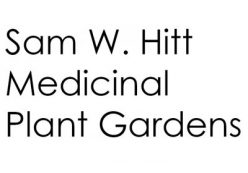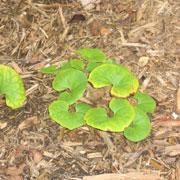Plant Family: Aristolochiaceae (Birthwort)
Botanical Name: Asarum canadense
Alternative Name: Canadian Wildginger
Duration: Perennial
Blooms: April – May
Location in Garden: MacNider Entrance (2005 – 2012)
Medicinal Uses: Stimulant, carminative, diuretic, diaphoretic. Used to relieve chest pain and painful intestinal spasms. Does contain aristolochic-acid, which the United States Food and Drug administration describes as carcinogenic with the potential to lead to kidney damage and cancer in the urinary tract.
Folklore: Native Americans used the rhizome as a stimulant, appetite enhancer, and as a charm. Native Americans also found use of the dried root distillate, known as Canadian snakeroot oil, as a spice and flavoring.
The root and rhizome were slowly boiled in a small quantity of water for a long time and the resulting liquid taken as a contraceptive by the women of many Native American tribes.
Other fun facts: One group of early American settlers (witch hunters) called Wild Ginger (wartchase) and believed witches used it to rid themselves of warts so they would not be recognized.
More Information


